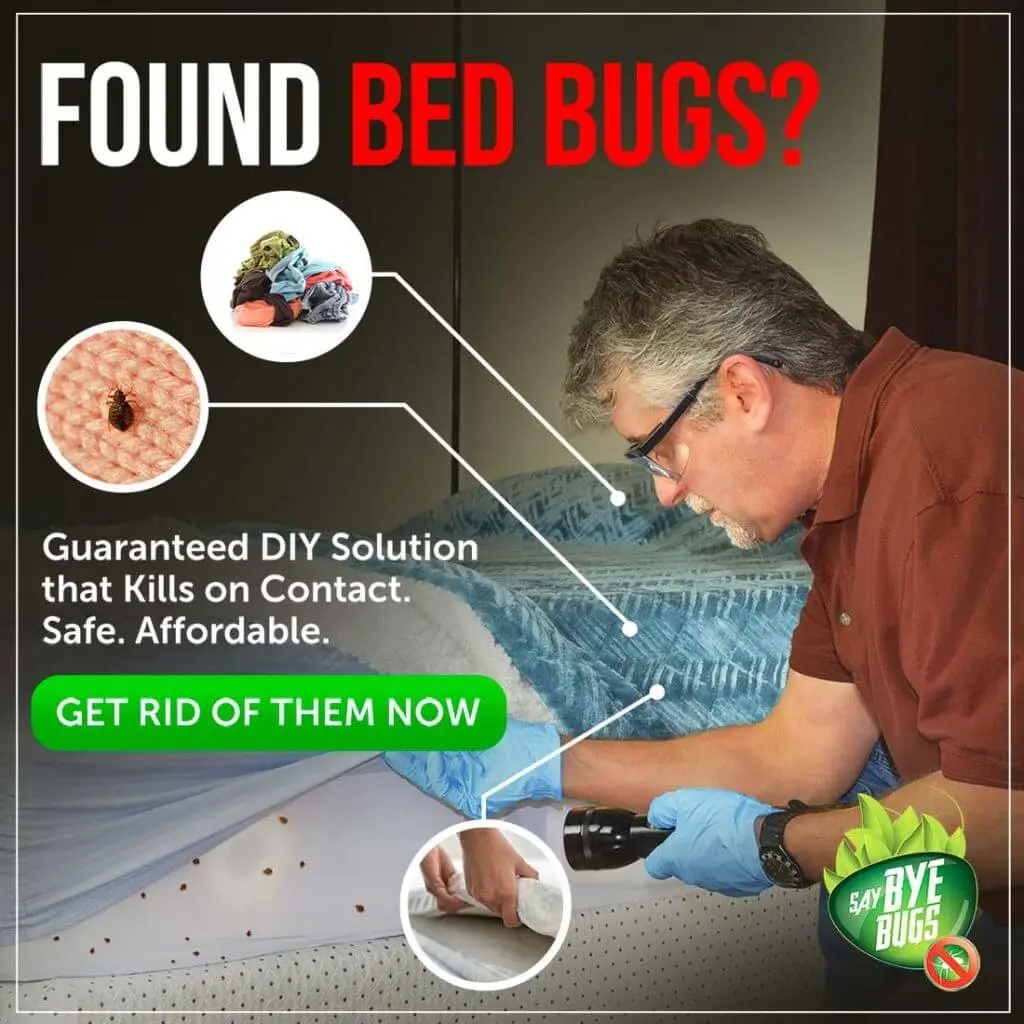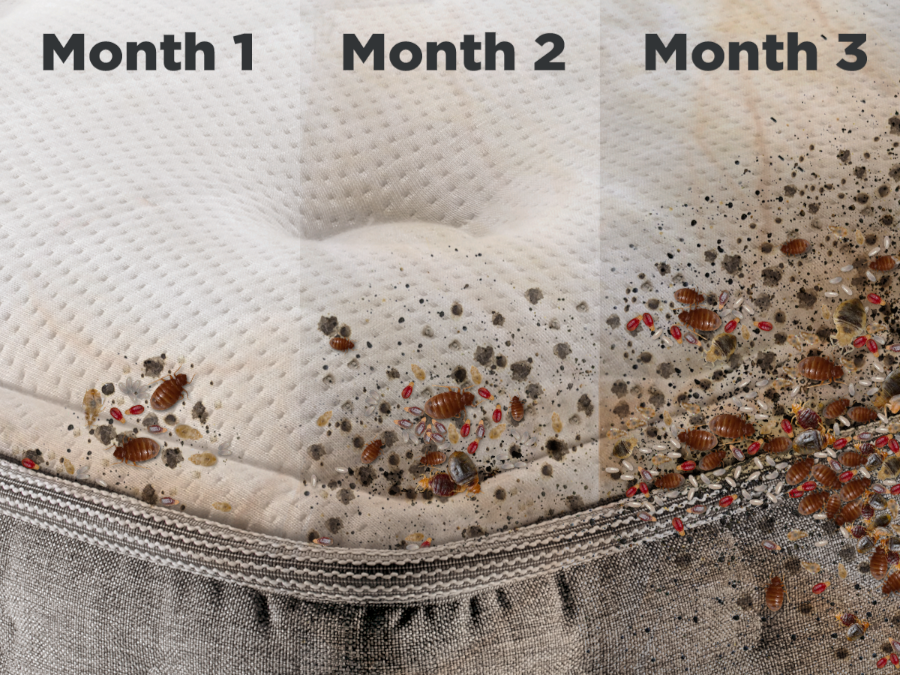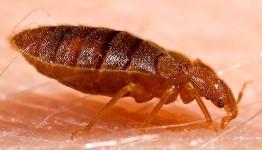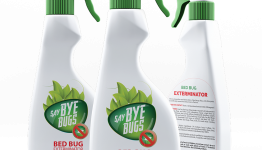Proven 3-step technique used since 2010
Updated on: 4th of Jan 2023 | 4 min read
Found red, itchy welts on your body?
Want to ensure no new tiny red point turns into a burning skin rash?
The following paragraphs describe how you can reduce the number of new bed bug bites tonight.
How?
By blocking or at least obstructing bug’s path of getting to your skin. Sounds easy enough, right? So why is everyone having such problems with bed bugs?
You see, bed bugs are nocturnal animals. They crawl on you only to feed but dwell (or harbor) somewhere else. They are active only during the night and remain hidden during the day. Hideouts are difficult to find and are scattered all over your bed and bedroom. Finding them is not something that can be done quickly even if you know where to look. This represents the core of the problem, as it may take hours or days to find them. So aiming to get rid of them in a single swoop is rarely the best choice, although the majority aims to go down that path. It is much more practical to first address the irritating problem – the bites.
Check Here to Make Sure you Really Have Bed Bugs before proceeding.
The emergency procedure used for this purpose is called ‘Isolating the Bed’. Below is a list of steps that must be completed on the same day, before going to bed, to ensure no new bed bug bites appear.
Technique Isolating the Bed
PHASE I: Bed
Step 1: Remove all access points
to and from the bed except for four bed legs.
- Move the bed away from all bedroom elements. This includes walls, nightstands, chairs, sofas, drapes, clothes, wardrobes, etc.
- Completely remove all elements from the bed that are not vital for your thermoregulation during sleep. This includes covers, toys, bedspreads, quilts, coverlets, pillows, comforters, bed skirts, night garments, books, electronics, gadgets, wearables, cables, lights, etc. Place all these items in a bag or other container where you can seal them completely until proper treatment.
- Those elements you absolutely require for sleep (duvets, sheets, a pillow) should be placed in a separate bag that you will treat shortly.
- You should be looking at a plain bed (a mattress with a bedframe) and two sealed bags when you finish this step.
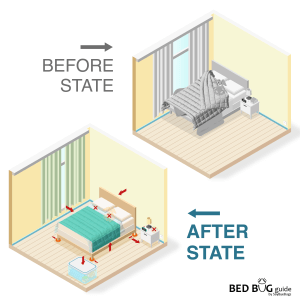
Step 2: Clean the bed frame.
- Remove the mattress from the bedframe. If possible place it on a hard floor and not on a rug or other kind of textile where bed bugs could hide. Putting it on plastic or paper is also an option.
- Vacuum first the bedframe and headboard thoroughly from all sides – up, sides, and from below! Use the highest possible suction power. If you have designated narrow vacuum attachments use those to maximize the suction and accuracy.
- The vacuum will have difficulties in sucking from cracks and crevices. It may also not be the best solution for all surface types and situations. So look for signs of bed bugs, and rather clean and scrub all areas where a hint of bed bugs exists. Pay special attention to every crack and crevice you find and do not neglect the bottom sides of the bed elements. You can use a standard household cleaning agent to start tonight but afterward, get a specialized solution. Optimal is something that is proven to kill all blood-sucking bed bugs, yet has a minimal or even non-toxic effect on humans. After all, you’ll be treating the bedroom where you spend 1/3 of your life. One such, even guaranteed option, is this.
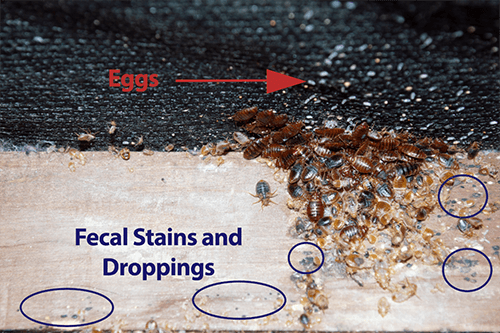
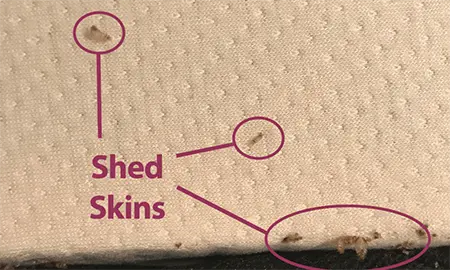
Step 3: Clean the mattress
- Proceed to vacuum the mattress. After treating all six sides on the mattress’ surface, proceed to spread its seams and folds and vacuum those areas as well.
- Place the mattress back on the bed frame.
- After you finish vacuuming take the bag out of the vacuum machine, put it in a plastic bag, and seal it off completely. Dispose of it immediately.
Complete Steps 2 and 3 in full even if you do not see bed bugs or their indications. Larvae and eggs can still be present and are very hard to see with the naked eye.
Step 4: Treat the removed bed elements
- Wash the necessary duvets and sheets, and if you cannot go without them, pillow with a pillowcase, at 113°F or higher temperatures. Later you can use designated laundry detergents such as this one here to simplify the matter or to treat gentler fabrics without the risk of damaging them.
- Dry the elements at the highest permitted temperature of the fabric.
- Put the washed elements in a new plastic bag. Seal it tightly.
Step 5: Prepare the bed
- Equip the bed with the recently treated sheets.
- If you’ve found bed bugs in your bed we strongly recommend getting professional bed encasements for the mattress, pillow, and box springs. This wrapper will seal up the bed bug hiding spots and prevent bed bugs from ever hiding in your bed again. There are no home solutions to this.
- Place the treated duvets and pillows with pillowcases on the bed.
Step 6: What about the bed legs?
If done correctly, your bed should now be ready for sleep, yet no bed element being in contact with any other element in the bedroom. The sole exception being the four legs touching the floor. Since these represent the final points for bed bug commute they have to be addressed too.
- A low-cost home solution is putting a strong tape type (e.g. a scotch or a duct) around the legs facing outwards. This is to ensure that if the bugs crawl on the leg, they will get glued to the tape.
- An additional home alternative is to put each bed leg onto a dish or a plate that has very smooth surfaces. Then add some home oil into it, so that the bed bugs would have to ‘swim over’ before reaching the leg of the bed. A more professional, and cleaner method is to simply put traps/interceptors underneath the legs.
Now that the bed has become an isolated island one would expect the number of new bites to decrease almost to zero, right?
Well … not exactly. Here’s why.
You may bring bed bugs back into bed on your skin or on your clothes. So, before you lie in your bed do two more things.
PHASE II: Sleepwear
- Step: You need to wash the sleepwear in the same manner as above (high-temperature wash and/or wash with a dedicated laundry detergent, tumble dry and seal them in a dedicated bag). Do not go to sleep with previously used or even home-stored sleepwear, as they may have bed bugs on them.
- Only put the sleepwear on immediately before going to bed.
- Store the newly washed sleepwear in a separate sealed space when you’re not wearing it.
PHASE III: You
We recommend washing with hot water and soap directly before going to bed. This is because there might be some larvae or small bed bug on your skin that you’ve picked up at your home while doing all the steps described above. The easiest way to get rid of it is to just wash it off.
If you’ve done all these steps then during this and a few following nights the number of bites should drop, right?…
Yes, however … expect the number of bites to start growing back in days or weeks. Let me explain.
You see, the above procedure is only provisional. Despite our efforts, the bed bug infestation is still present in your home and must be addressed. With a single bed bug laying up to 8 eggs/day, you should investigate and decide how to resolve it without any delay. SayByeBugs is one effective solution, but you may check a list of possible approaches with their pluses and minuses here.
Conclusions
This guide is a compact summary of what and how to protect yourself from new bed bug bites if under time pressure. Its aim is to provide practical actionable steps that deliver results in the shortest possible time. So understand that the content does not cover all possibilities and risks. When conducting improvised home solutions take care of your own safety. If you feel that something vital is missing, please let us know here.
We would also welcome feedback on how much bite relief the above process brought to you and for how long.
Yours, BedBugGuide Team.
P.S: Are the existing bites too itchy and you require some immediate help with that problem too? We highly recommend checking this tool. It was developed by European dermatologists to treat all kinds of insect bites. It removes the pesky itching and red swells that stays typically for hours on your skin in a non-toxic way. If you are interested to know more about the Bed Bug Bites we also recommend checking this article.
P.P.S.: A tiny possibility exists that you do not have bed bugs, and something else is biting you. To confirm that what you have are bed bugs find one bug (it doesn’t need to be alive) and upload its photo on this free Bed Bug Photo Identification Tool to confirm its identity.
Footnotes:
- Some steps need aids or tools to finish them in a professional manner. Getting those delivered requires time. We have listed a few alternative approaches using home-available materials if the biting is too unbearable and you cannot wait. Learn more about pros and cons of bed bug treatment equipment here.
- If you’re not certain you’ve been bitten by bed bugs check this bite identification guide here.
- If you are interested to know more about bed bug behavior check this article here.
Learn How Mark Stopped the Itches, Skin Bumps, and Welts
Mark is a single father of two. He had a severe problem with bed bugs at home and the entire family woke up in the middle of the night due to itching, with bumps and welts on their skin.
He tried everything out and nothing worked until someone introduced him to Say Bye Bugs. He decided to give it a try and in the last month since he was seriously using the product, he saw a great improvement in the situation and a great reduction in the number of bugs.
Say Bye Bugs is a fantastic product and he will recommend it to anyone.
Interested to learn more about Bed Bugs?
Check this 2 min video below that explains the basics and how you can Easily Get Rid of them by Yourself.
If you really want to get rid of bed bugs today try SayByeBugs! It was developed as a safe and highly effective alternative among a sea of products that rarely deliver on their promises.

